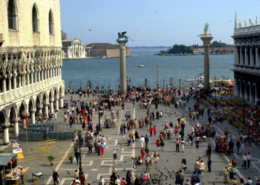
Piazza San Marco, View of Piazetta, Between the Biblioteca Marciana and the Doge’s Palace
The Piazza originated in the 9th century as a small area in front of the original St Mark's Basilica. It was enlarged to its present size and shape in 1177, when the Rio Batario, which had bounded it to the west, and a dock, which had isolated the Doge's Palace from the square, were filled in. The rearrangement was for the meeting of Pope Alexander III and the Emperor Frederick Barbarossa.
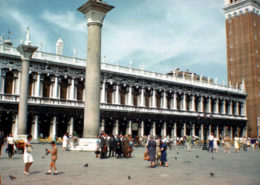
Piazza San Marco, View of the Façade of the Biblioteca Marciana
The Piazza originated in the 9th century as a small area in front of the original St Mark's Basilica. It was enlarged to its present size and shape in 1177,
when the Rio Batario, which had bounded it to the west, and a dock, which had isolated the Doge's Palace from the square, were filled in. The rearrangement was for the meeting of Pope Alexander III and the Emperor Frederick Barbarossa.

Piazza San Marco, View of Procuratie Vecchie and St. Mark’s Clocktower, North Edge of Square
The Piazza originated in the 9th century as a small area in front of the original St Mark's Basilica. It was enlarged to its present size and shape in 1177, when the Rio Batario, which had bounded it to the west, and a dock, which had isolated the Doge's Palace from the square, were filled in. The rearrangement was for the meeting of Pope Alexander III and the Emperor Frederick Barbarossa.
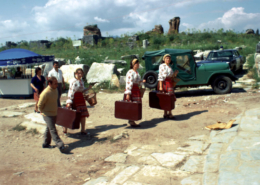
The Ephesus Archaeological Museum, Exterior of the Museum Parking Lot
The excavations which have been continueing since the last century at Ephesus, today are being carried out by Austrian archaeologists. The works unearthed during these excavations are being displayed at the Ephesus Museum. However the works obtained in excavations prior to World War II, were taken to the Vienna Museum.
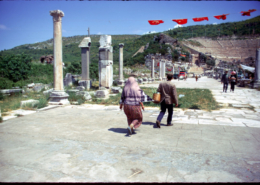
The Arcadian Street of Ephesus
This street extending from the baths to the Theatre is called the Arcadian Street. Originally built in the late Hellenistic Period, the street was restored during the reign of the Emperor Arcadius (395-408 AD.), from whom it takes its present name. There were galleries and shops all along either side of the street, which is 530 metres long and 11 metres wide.
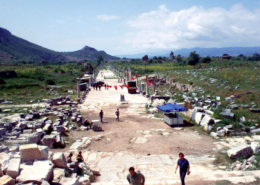
The Arcadian Street of Ephesus
This street extending from the baths to the Theatre is called the Arcadian Street. Originally built in the late Hellenistic Period, the street was restored during the reign of the Emperor Arcadius (395-408 AD.), from whom it takes its present name. There were galleries and shops all along either side of the street, which is 530 metres long and 11 metres wide.
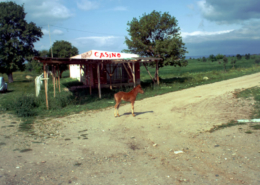
Views of the Surrounding Area Near Troy
The city of Troy, also known as Truva, has been populated nine different times and consists of nine different settlements dating back to the Late Bronze Age between 3000-2400 BCE. It was successively settled by Mycenaeans, Greeks, Romans, Byzantines, and Ottomans. Troy was considered a mythical place until its discovery in the nineteenth century by Heinrich Schliemann.
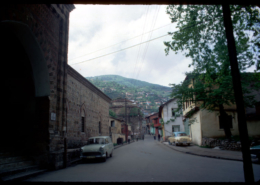
General Views of Bursa and the Surrounding Region
Bursa is an old city dating back to 183 CE as the Bythian capital of PrusiasI. It was then favored by both the Romans and Byzantines because of its wonderful hot springs. It was then made the first capital of the Ottoman Empire in 1326 when it was conquered by the Ottomans from the Byzantines and given its current name of Bursa.
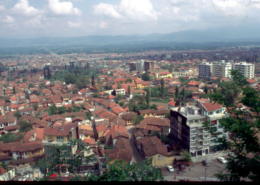
General Views of Bursa and the Surrounding Region
Bursa is an old city dating back to 183 CE as the Bythian capital of PrusiasI. It was then favored by both the Romans and Byzantines because of its wonderful hot springs. It was then made the first capital of the Ottoman Empire in 1326 when it was conquered by the Ottomans from the Byzantines and given its current name of Bursa.
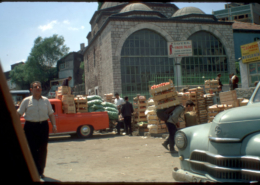
Various Photographs of Unspecified People, Places, and Views in Istanbul, View of a Street Market (Pazzar)
Photographs taken by Albert Hoxie during his trip to Istanbul in the 1970's.

